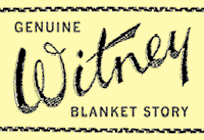

The Witney Blanket Weavers' Company
 The brass seal matrix of the Witney Blanket Weavers' Company. The word 'Wavers' is not a mistake, but the Witney dialect pronunciation of 'weavers'. The aims of the Company The granting of the Charter This new Charter stipulated who were to be the first officers of the Company. The High Steward was to be the Earl of Rochester, whom the Queen called 'my well loved cousin': he was in fact her uncle. He was an old man and died not long after accepting the post. The master weavers then had the option to pick their own High Steward. They chose a very influential local landowner, Simon First Earl of Harcourt, who held a large house at Stanton Harcourt, a small village about four miles from Witney. The Earl was on good terms with Queen Anne, but he had also contrived to keep friendly with the Stuart family, who were the deposed Royal family in exile. This was rather a shrewd choice by the master weavers, who possibly wanted to keep a foot in both camps. The Earl was very generous to the master weavers and in return for accepting the post he presented them with a painting from his own collection, a fine portrait of Queen Anne painted by Sir Godfrey Kneller. Up until this day the Harcourt family have collected paintings of British monarchs and the only one that is missing from their collection is a portrait of Queen Anne which has never been replaced. This painting hung in the entrance hall of Early's offices until they closed permanently in 2002; it is now in the keeping of Oxfordshire Museums Service. Besides the High Steward, Queen Anne appointed the first Master of the Blanket Weavers' Company, an elderly weaver called John White. He too died after a short space of time and again the blanket weavers had to pick a new leader. This time a younger fellow-worker was elected to lead them and Thomas Early became Master. Alban Redgate and William Marriott were elected to be his two wardens. Activities of the Company Deputations from the cloth industry had been frequently made to the Crown and Government over many centuries. For example, Edward III had been asked to encourage the making of cloth in England in the 14th century. He applied an embargo on raw wool being exported from England. This in turn kept the price of wool down because it reduced the size of the market. Later Governments were in favour of more open trade with overseas markets and started to alter the laws of the wool embargo. The Blanket Weavers' Company sent deputations to the Government asking that wool should still be a prohibited export. The Company also contributed to the Government in times of need. For instance, when Bonnie Prince Charlie invaded England from Scotland in 1745 with his Jacobite Army, it gave thirty guineas to equip a company of thirty men to serve in the Yeomanry under Viscount Harcourt (it seems as if the Harcourt family had now come completely round on the side of the reigning king and that both he and the Company of Blanket Weavers wholeheartedly supported the Crown). In later years, when invasion of Britain's shores was threatened by Napoleon, money was sent on numerous occasions to help in the defence of the realm. As things were getting dangerous for England again in 1797 when the fleet mutinied at The Nore, the Company was horrified and sent £50, 'for the purpose of bringing to public justice such lurking traitors as may have fomented and excited the mutiny'. In 1838 a large donation was also given to the Radcliffe Infirmary in Oxford. The Company had a large warehouse in London (at one time it had two), with their own 'Lodge Keepers and Porters'. In these buildings would be kept vast amounts of finished blankets ready to be sold, either to the home trade or export. Having these large stockpiles of blankets also enabled master weavers to help each other. For example, if John Early had an order for 120 stockfuls of 'point' blankets, but only had 97 in the warehouse he would be able to take 23 stockfuls of the same type from one of his fellow weavers to complete the order. He would then pay the weaver concerned the price he had obtained. This was all possible because of the tests and inspections that all woven cloth had to pass before leaving Witney. The end of the Company  The Blanket Hall in the late 19th century, after it had ceased to have any connection with blanket making.
|
|
| References Plummer 1934 Plummer and Early 1969 Townley 2004 |
|



